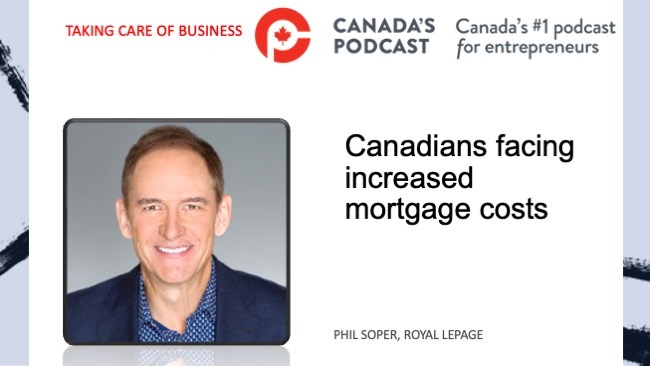The Bank of Canada held its target for the overnight rate at 4.5 per cent on Wednesday, with the Bank Rate at 4.75 per cent and the deposit rate at 4.5 per cent. The Bank announced it is also continuing its policy of quantitative tightening.

Gustavo Fring
Here’s the Bank’s full statement.
“Inflation in many countries is easing in the face of lower energy prices, normalizing global supply chains, and tighter monetary policy. At the same time, labour markets remain tight and measures of core inflation in many advanced economies suggest persistent price pressures, especially for services,.
“Global economic growth has been stronger than anticipated. Growth in the United States and Europe has surprised on the upside, but is expected to weaken as tighter monetary policy continues to feed through those economies. In the United States, recent stress in the banking sector has tightened credit conditions further. US growth is expected to slow considerably in the coming months, with particular weakness in sectors that are important for Canadian exports. Meanwhile, activity in China’s economy has rebounded, particularly in services. Overall, commodity prices are close to their January levels. The Bank’s April Monetary Policy Report (MPR) projects global growth of 2.6% this year, 2.1% in 2024, and 2.8% in 2025.
“In Canada, demand is still exceeding supply and the labour market remains tight. Economic growth in the first quarter looks to be stronger than was projected in January, with a bounce in exports and solid consumption growth. While the Bank’s Business Outlook Survey suggests acute labour shortages are starting to ease, wage growth is still elevated relative to productivity growth. Strong population gains are adding to labour supply and supporting employment growth while also boosting aggregate consumption. Housing market activity remains subdued.
“As more households renew their mortgages at higher rates and restrictive monetary policy works its way through the economy more broadly, consumption is expected to moderate this year. Softening foreign demand is expected to restrain exports and business investment. Overall, GDP growth is projected to be weak through the remainder of this year before strengthening gradually next year. This implies the economy will move into excess supply in the second half of this year. The Bank now projects Canada’s economy to grow by 1.4% this year and 1.3% in 2024 before picking up to 2.5% in 2025.
“CPI inflation eased to 5.2% in February, and the Bank’s preferred measures of core inflation were just under 5%. The Bank expects CPI inflation to fall quickly to around 3% in the middle of this year and then decline more gradually to the 2% target by the end of 2024. Recent data is reinforcing Governing Council’s confidence that inflation will continue to decline in the next few months. However, getting inflation the rest of the way back to 2% could prove to be more difficult because inflation expectations are coming down slowly, service price inflation and wage growth remain elevated, and corporate pricing behaviour has yet to normalize. As it sets monetary policy, Governing Council will be particularly focused on these indicators, and the evolution of core inflation, to gauge the progress of CPI inflation back to target.
“In light of its outlook for growth and inflation, Governing Council decided to maintain the policy rate at 4½%. Quantitative tightening continues to complement this restrictive stance. Governing Council continues to assess whether monetary policy is sufficiently restrictive to relieve price pressures and remains prepared to raise the policy rate further if needed to return inflation to the 2% target. The Bank remains resolute in its commitment to restoring price stability for Canadians.”
The Credit Counselling Society said Canadians are getting a slight reprieve from the storm of financial challenges they’ve faced in the first quarter of 2023, adding it might sound like good news, but it’s the least of our worries.
“Rising costs, economic uncertainty, and an unpredictable housing market, are just a few of the financial obstacles still facing Canadians,” said Peta Wales, President & CEO of the Credit Counselling Society (CCS). “While it’s good news for consumers that the rate has not increased, what we’re still seeing is a growing reliance on borrowing – credit cards, payday loans, lines of credit — and those higher debt loads, which can last years, can make it almost impossible to withstand these economic conditions without falling even further into debt.”
Avery Shenfeld, Chief Economist with CIBC Economics, said the Bank of Canada’s motto is now “don’t just do something, sit there,” and patience should indeed be a virtue in getting inflation back to its target without inflicting too much harm on the economy.
“As widely expected, the Bank left the overnight rate unchanged at 4.5 per cent, and maintained its warning that it could still hike again if the economy fails to slow enough to sufficiently quell price and wage pressures. That’s still in contrast to market hopes for rate cuts later this year. After a flat Q4, the upside surprise in Q1 growth hasn’t swayed it from the view that the desired slowdown is still on the way, with the statement citing a coming slowing internationally and the lagged impacts of prior rate hikes on Canadian households and business investment as reasons to expect “weak” (but still positive) growth over the rest of this year. The growth outlook for 2023 was raised largely due to the better start, while the inflation outlook was little changed. The neutral rate midpoint remains at 2.5 per cent, while potential GDP incorporates haircuts made due to supply chain issues over the past year, and doesn’t add any optimism ahead despite stronger growth in the labour force of late. Overall, still on hold, but not in synch with market expectations for outright rate cuts this year, since the Bank isn’t calling for a recession,” he said.
Rob Roach, Deputy Chief Economist and Managing Director at ATB Financial, said: “With the Canadian economy performing better than the Bank expected to start the year and fears of a hard landing being stoked by the recent troubles in the US and Swiss banking sectors, the Bank of Canada is caught between a rock and a hard place when it comes to interest rates.
“If the Bank raises rates even more in an effort to make sure inflation gets back to its target range sooner than later, it risks the aforementioned hard landing. If it lowers rates to give the economy a boost, inflation could fail to keep coming down or even go back up. Rather than pick one of these options, the Bank has decided to continue to wait and see before adjusting the policy rate,” he said.
James Orlando, Senior Economist with TD Economics, said while the Bank acknowledged that the economy is exhibiting cyclical strength as evidenced by strong employment gains and a bounce-back in consumer spending, it appears confident that growth is set to slow in the coming months.
“Over the last couple of weeks, the timing of rate cuts has been pushed out, with markets now expecting the first cut to occur in December (from September). This reflects the economy’s cyclical rebound, which will keep underlying cyclical inflationary pressures (supercore) elevated through this year. As the BoC acknowledged, this could make “getting inflation the rest of the way back to 2%” more difficult. Given this backdrop, we think the best policy for the BoC is to keep rates stable until cyclical inflation dynamics turn decisively lower.”
 (Mario Toneguzzi is Managing Editor of Canada’s Podcast. He has more than 40 years of experience as a daily newspaper writer, columnist, and editor. He worked for 35 years at the Calgary Herald, covering sports, crime, politics, health, faith, city and breaking news, and business. He works as well as a freelance writer for several national publications and as a consultant in communications and media relations/training. Mario was named in 2021 as one of the Top 10 Business Journalists in the World by PR News – the only Canadian to make the list)
(Mario Toneguzzi is Managing Editor of Canada’s Podcast. He has more than 40 years of experience as a daily newspaper writer, columnist, and editor. He worked for 35 years at the Calgary Herald, covering sports, crime, politics, health, faith, city and breaking news, and business. He works as well as a freelance writer for several national publications and as a consultant in communications and media relations/training. Mario was named in 2021 as one of the Top 10 Business Journalists in the World by PR News – the only Canadian to make the list)
About Us
Canada’s Podcast is the number one podcast in Canada for entrepreneurs and business owners. Established in 2016, the podcast network has interviewed over 600 Canadian entrepreneurs from coast-to-coast.
With hosts in each province, entrepreneurs have a local and national format to tell their stories, talk about their journey and provide inspiration for anyone starting their entrepreneurial journey and well- established founders.
The commitment to a grass roots approach has built a loyal audience with over 120,000 downloads and thousands of subscribers on all our social channels and YouTube. Canada’s Podcast is proud to provide a local, national and international presence for Canadian entrepreneurs to build their brand and tell their story.





